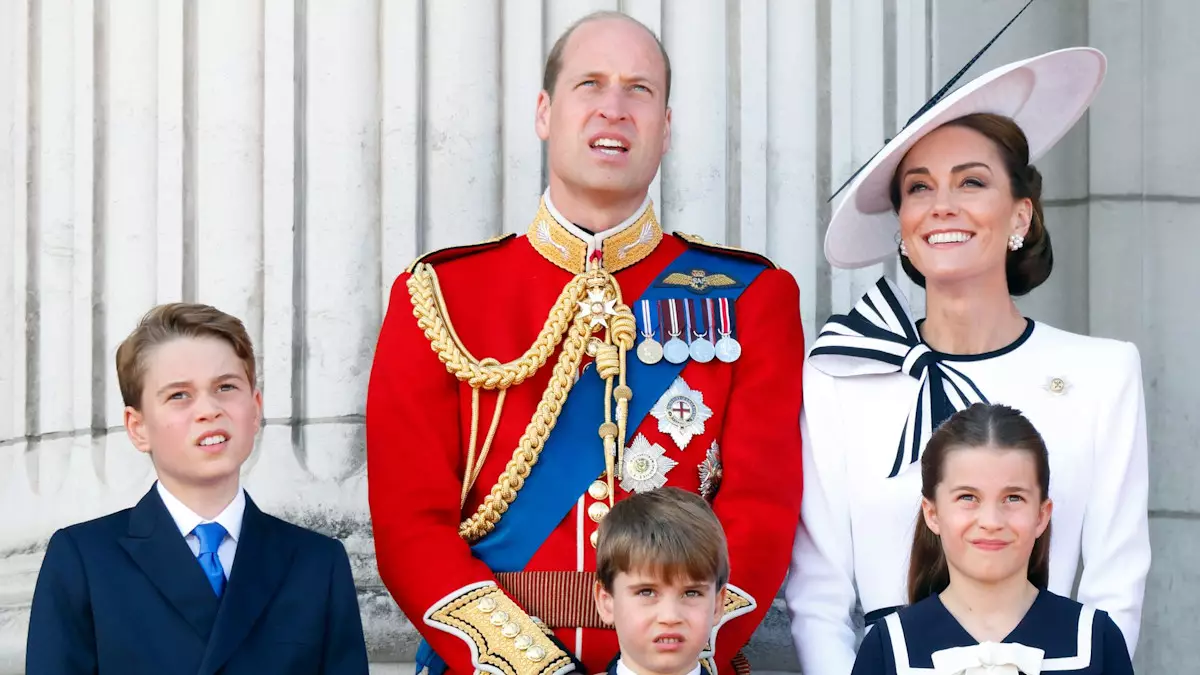The curiosity surrounding the wardrobe of the Princess of Wales, Kate Middleton, is not unfounded. Royal fans and fashion enthusiasts frequently ponder how she manages her children’s clothing amidst a backdrop of public appearances and royal engagements. Recently, during an insightful visit to Corgi, a family-run knitwear and sock factory in Ammanford, Wales, Kate shed light on her unique approach to preserving her children’s apparel. At the age of 43, she shared her passion for archiving outfits that have timeless quality and longevity.
Kate remarked on the durability of well-crafted clothing, claiming, “It’s so lovely to reuse the things that are well-made.” This statement encapsulates a broader trend in sustainable fashion, emphasizing the importance of reusing quality garments rather than succumbing to the fast-fashion cycle. It becomes evident that the Princess practices what many preach: the beauty of sustainability while fostering a strong sense of family heritage.
Throughout their childhoods, Prince George, Princess Charlotte, and Prince Louis have been seen adorned in an array of signature outfits that speak volumes about family ties and tradition. Such heirloom pieces not only illustrate the affection and continuity within the family but also showcase Kate’s commitment to sustainability. The clothing worn by Prince George and Princess Charlotte often transcends time, as evidenced by Charlotte’s red shoes that belonged to her uncle, Prince Harry, and Louis’s outfit that dates back to the 1980s.
Moreover, Louis’s adoption of William’s iconic sailor suit during the late Queen’s Platinum Jubilee celebrations further accentuates this narrative of familial fashion. In an age driven by trends, the Princess’s repeated use of previous generations’ clothing breathes life into the idea that fashion is not merely transient but can be interwoven with personal history and emotional significance.
During her visit to Corgi, Kate didn’t just observe; she engaged directly with the craft. Attempting to sew a sock on one of the factory’s machines, she offered a light-hearted commentary on the intricacies of such work. Her experience revealed both a humanizing moment and an appreciation for the artisan’s craft. “It’s so fiddly,” she laughed, acknowledging the skill involved in the textile industry.
It’s moments like these that resonate with people—a royal figure taking the time to understand and appreciate the craftsmanship behind the clothing they wear. Here, Kate serves as a bridge connecting modern fashion sensibilities with time-honored traditions, fostering a dialogue about the importance of skilled labor and local businesses.
Beyond the realm of personal style, Kate’s visit to Corgi highlighted its role in the community. The initiative of involving local school children in work experience to learn craftsmanship speaks to a broader commitment to education and skill development. The Princess’s commentary, praising the engagement of youth in such trades, underscores the importance of passing down not just clothing but also the skills and knowledge necessary for their creation.
This initiative not only enriches the local economy but also instills a sense of pride and identity in the younger generation. In a world often dominated by digital screens, the revival of craftsmanship serves as a reminder of the tangible connections we can forge through skill and artistry.
As her visit came to a close, Kate was presented with thoughtful gifts: a cream cashmere cardigan and a navy wrap for her mother, Carole Middleton, in celebration of her upcoming 70th birthday. Her heartfelt reaction, “That’s so sweet of you, thank you, I wasn’t expecting it,” reinforces the warmth and genuine connections that can be fostered even within royal engagements.
This interaction not only speaks to her appreciation for artisanship but also highlights her role as a daughter and a mother who values the importance of family, adding a profoundly personal dimension to her public persona.
Kate Middleton’s recent outing in South Wales offers a vivid tapestry of sustainability, heritage, craftsmanship, and community engagement. It exemplifies how fashion can be more than just fabric; it can be a conduit for storytelling, family legacy, and social impact. As she continues her journey as a modern royal, the echoes of these values will undoubtedly resonate far beyond her wardrobe.

